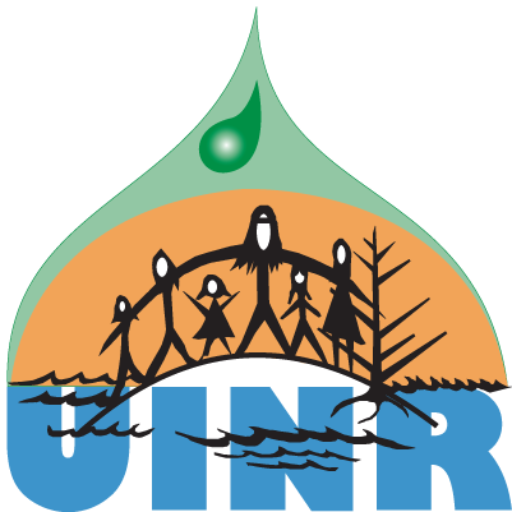Elder Albert Marshall may have said it best: “Plamu was historically one of the staple foods upon which First Nations people depended. It was viewed as a gift from the Creator, and it seemed that it would last forever. That is obviously not the case: the species is threatened on a daily basis. It is our responsibility to ensure that these gifts will be available for future generations.”
Several months ago, with funding from Fisheries and Oceans Canada, Sage Environmental Program and the Atlantic Salmon Conservation Foundation, UINR hired researcher Matthew Bryden to do a study on exactly what scientific information is out there on this important species. His research was led by the findings from the CSI (Collaborative Salmon Initiative) conference Dialogue on Plamu/Atlantic Salmon in Cape Breton, held in June of 2006.
Matthew’s task was to find out what information was available, who holds it and how accessible it is. This brought him to a wide variety of organizations around Cape Breton including the Margaree Salmon Association, Cape Breton University, libraries at Fisheries and Oceans Canada and Parks Canada, ADI, Eskasoni Fish and Wildlife, Environment Nova Scotia and Fisheries and Aquaculture Nova Scotia. He also spoke to fisheries guardians in Eskasoni.
Much of the information that Matthew found focused on the Margaree River, “Margaree River is important economically and, as an indexed river, it is the one that others in the area are most often compared to.”
Matthew has been impressed on both the amount of work organizations have been doing and the amount of time that salmon has been studied. “I found information going back to the 1930s but generally speaking, the amount of research being done today has dwindled as stocks declined and the economic importance was reduced. There are fewer rivers being monitored today and the amount of monitoring has also been scaled back.”
Matthew is working with Membertou Geomatics to set up an online database that will allow researchers to access all of the information that he has found. In addition to the titles of the work and short abstracts of what the research contains, researchers will be able to locate where that information is stored or located.
“Salmon people have been very helpful in sharing their information with me and it is amazing how much work has been done and continues to be done by groups like the Margaree Salmon Association, DFO and CSI Cape Breton. If their commitment to the species is any indication, salmon should have a brighter future in Unama’ki.”
 CSI Cape Breton is working on several projects to help plamu in Unama’ki. A Traditional Ecological Knowledge workshop is being planned to gather first-hand accounts of Elders and fishers on what they have seen over the years and their ideas on solutions.
CSI Cape Breton is working on several projects to help plamu in Unama’ki. A Traditional Ecological Knowledge workshop is being planned to gather first-hand accounts of Elders and fishers on what they have seen over the years and their ideas on solutions.
As a further step, UINR is working with Fisheries and Oceans Canada to set up a smolt wheel in Middle River to help estimate the number of salmon smolt making their way downstream. A smolt wheel floats in the river, directing fish into a tank where they are counted and studied before being released. This will allow us to estimate the salmon numbers in the river and get biological information that could help us address salmon decline.

